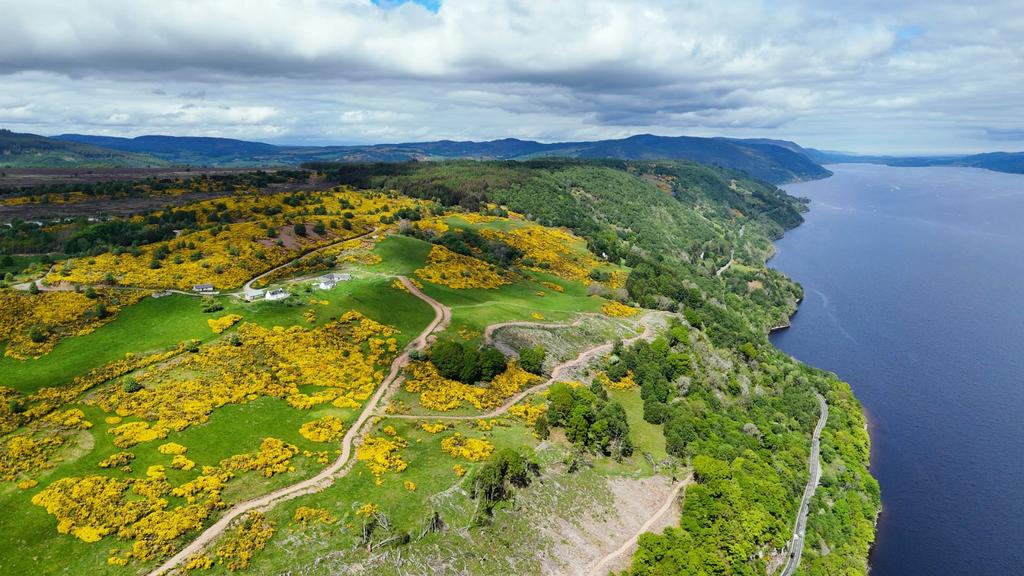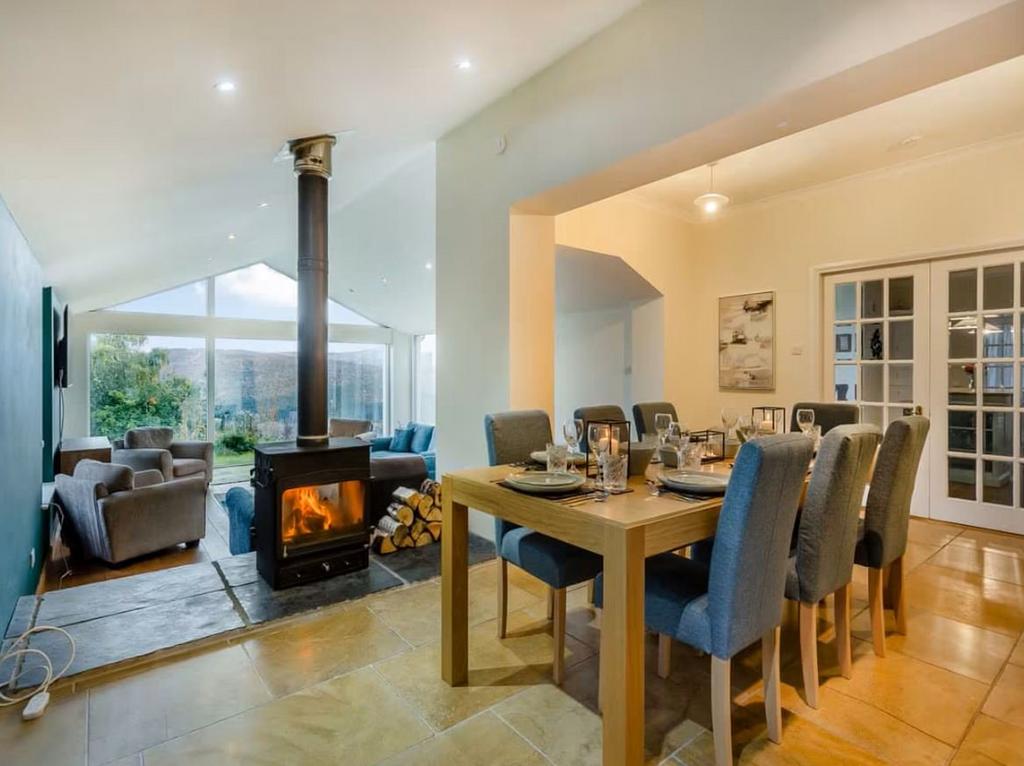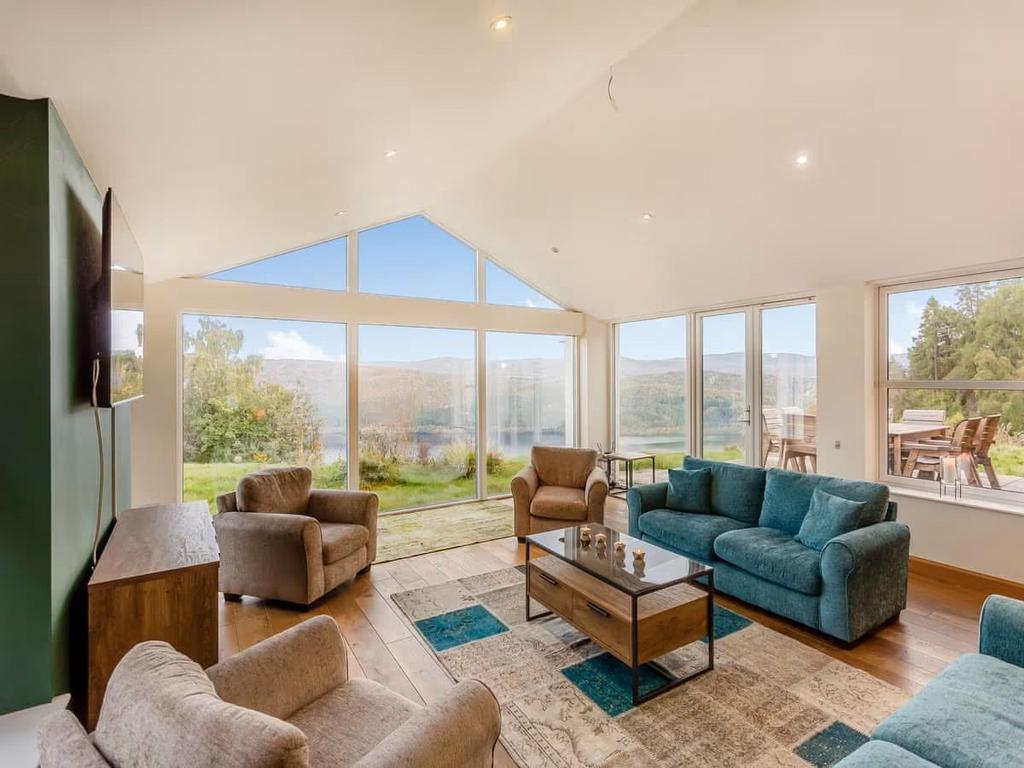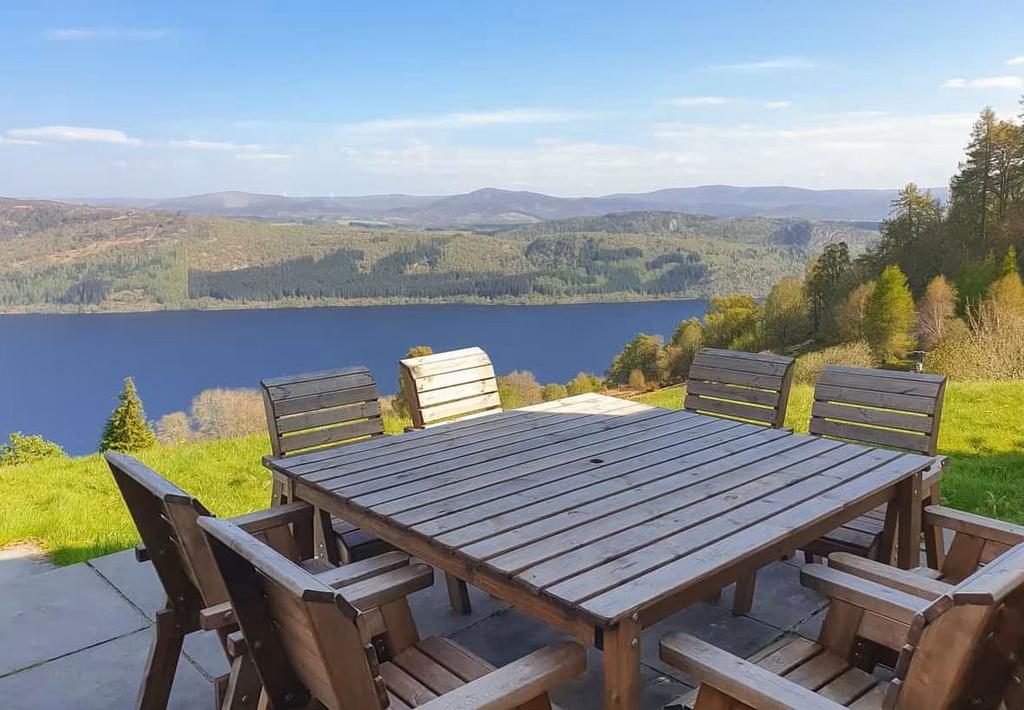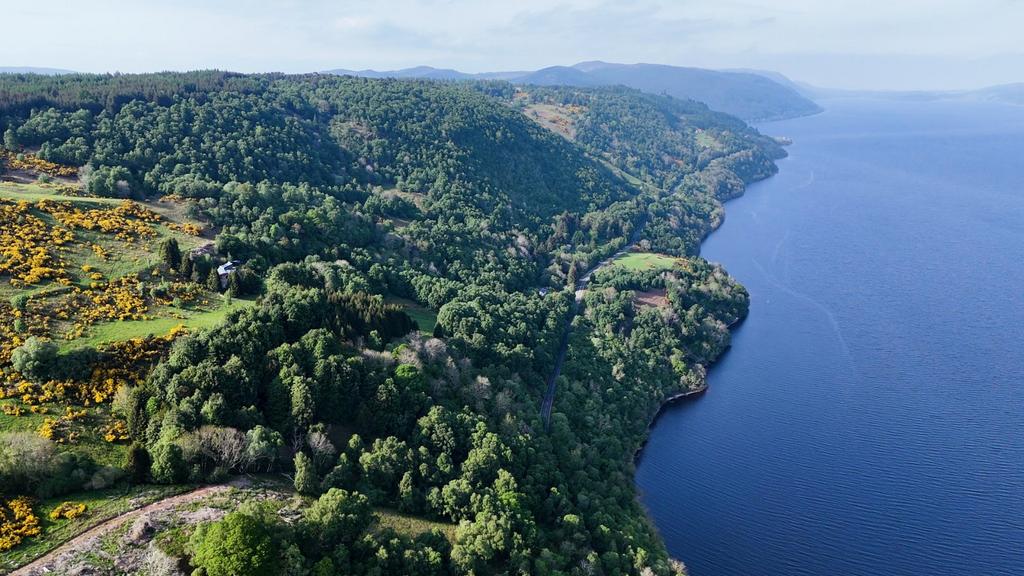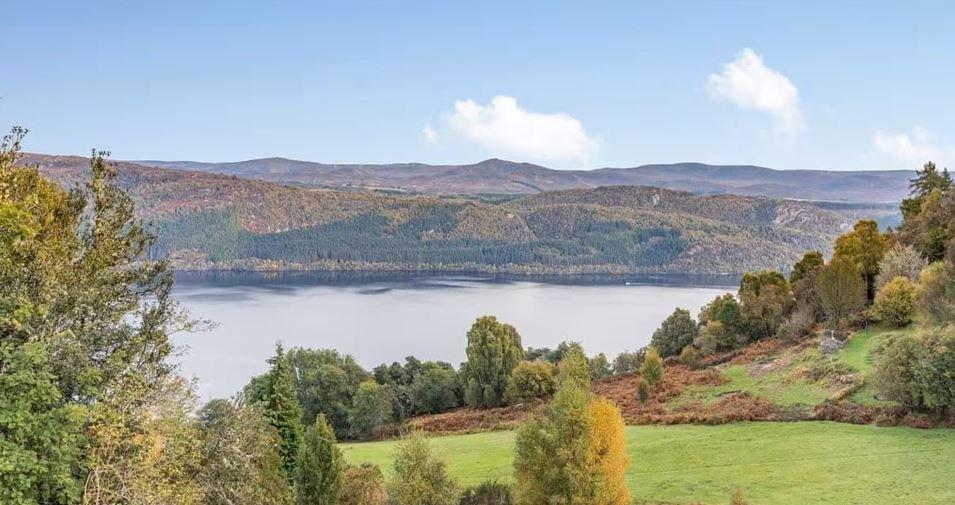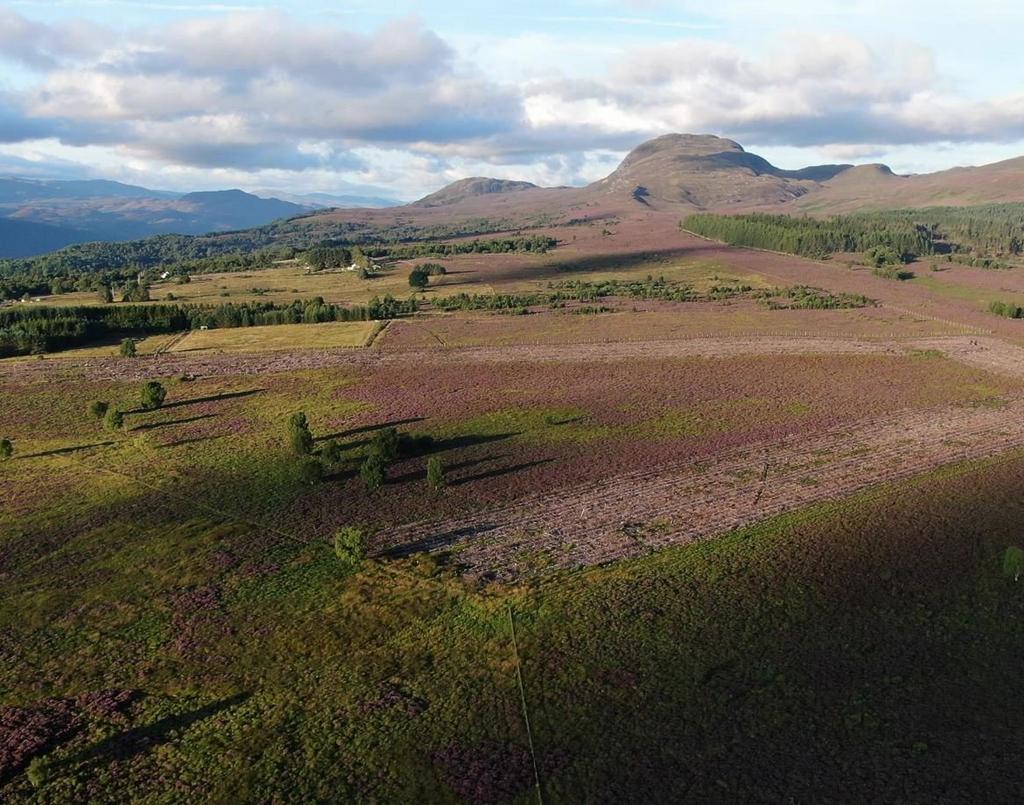Popular
Total views: 500+
Offers over
£2,200,0005 bedroom country house for sale
Bunloit, Drumnadrochit, Inverness-Shire
Featured
Study
Country house
5 beds
3 baths
834.00 acre(s)
Key information
Tenure: Leasehold | unconfirmed share | unconfirmed yrs left
Council tax: Ask agent
Features and description
- Tenure: Leasehold
* CLOSING DATE: 10 DECEMBER 2024 *
CURRENT OWNER'S OBJECTIVES FOR SALE
Highlands Rewilding’s mission is nature recovery and community prosperity through rewilding taken to scale in Scotland, and then beyond.
They seek to help rewild and re-people the Scottish Highlands by increasing carbon sequestration, growing biodiversity, creating green new jobs and generating sustainable profit for purpose.
The company’s land management actions and objectives are science-led, aiming to accelerate nature-based solutions that can help fight the existential and related crises of climate meltdown, biodiversity collapse, and social inequality, whilst helping to rebuild local economies.
Bunloit is one of three current sites being managed as a multi-habitat open air natural capital laboratory, generating data that can reliably underpin credits in natural capital, so making the nature-recovery industry confidently investable.
The work at Bunloit is rooted in the community, as the company aims to break new ground in consultation, partnership and involvement with the communities of which it is a part.
To achieve the five key goals (to the right), Highlands Rewilding employs a combination of land management activities: ecological restoration, regenerative agriculture, forestry management and regeneration, community engagement and recreational management, and carefully monitors outcomes including through experimental research.
An explanation of the envisaged future management model under either the Nature and Community in Perpetuity (NCIP) or Operating System Partnerships for Rewilding (OSPREY) is set out within the brochure.
If prospective purchasers are interested in the concept of owning North Bunloit but prefer a free hand to manage the estate in future without the continued involvement of Highlands Rewilding Ltd, they are also welcome to arrange viewings and submit offers but this should be on the understanding that offers from those purchasers willing to embrace the future management of the estates under NCIP or OSPREY will be looked upon more favourably.
NORTH BUNLOIT
North Bunloit is a 338-hectare mixed habitat Highland estate in Inverness-shire. It is the northern part of an estate managed by Highlands Rewilding primarily for natural capital uplift —biodiversity and carbon-based projects, nature restoration and community prosperity.
Ardachy is the main residence of North Bunloit. A magnificent four-bedroom contemporary house enjoying an elevated position and breathtaking views across Loch Ness and the Monadhliath mountain range.
North Bunloit largely comprises conifer plantations, peatland and bog, alongside large areas of ancient native woodland and heath. HRL is felling and thinning forestry compartments and will mostly replace these plantations with mixed native tree species, boosting biodiversity and long-term carbon sequestration.
Highlands Rewilding continues to carry out work to restore North Bunloit’s peatland, with several areas where peat is at least four metres deep. This work will greatly stem carbon emissions and eventually increase the carbon sequestration potential of this peatland.
Heathland and bog areas are being maintained through removal of self-seeded non-native conifers. Bracken is also being controlled through mechanical rolling and rotational grazing of a small herd of Highland Cows (not owned by the estate).
North Bunloit is home for an abundance of species. Mammals include pine martens, red squirrels, badgers, foxes, deer (Sika, Roe and Red) and wild boar. The wild boar are rarely sighted ecosystem engineers whose rooting activities can break up bracken domination and increase plant diversity.
The Great Glen Way runs through the estate along the Bunloit Road, and a funding application is in development to bring this path off-road. It is estimated that 30,000 people walk along the Way each year, bringing substantial tourism possibilities to this estate.
ARDACHY HOUSE
Ardachy House enjoys an elevated position and breathtaking views across Loch Ness and the Monadhliath mountain range.
The large living space on the ground floor combines a relaxed sitting room space and one of the two ground floor dining areas. Flooded with light, this area also provides spectacular views over the loch, leading out to the timber decked terrace and lawn area. These indoor areas have solid oak flooring throughout and the sitting room has both underfloor heating and a double-sided wood burning stove.
The bespoke kitchen comes with a comprehensive range of wall and base storage units, Aga, centre island, granite worktops and a host of integrated appliances. There is a music room/study located off the kitchen.
On the upper level the broad landing leads to the master bedroom which has a storage area with hanging space as well as an en-suite shower room. There is a large family bathroom complete with bath with shower over, WC, wash hand basin, heated towel rail and a further three well-proportioned bedrooms.
There is ample parking in front of the house for several vehicles, and a variety of useful outbuildings including a small summerhouse. The property is currently used for team gatherings, company retreats and is rented out on Cottages.com.
It is therefore available to the purchaser with vacant possession.
WOODLANDS
Approximately 30% of the woodland in North Bunloit is either native or productive woodland of native species, with areas of open ground and pockets of peatland. Much of this is ancient woodland, with species dominated by birch and oak. The remaining 70% of the woodland is productive conifer plantations, ranging from poor quality, windblown pine to reasonable stands of Sitka spruce. There are also stands of productive Scots pine which have been previous thinned and would be good candidatesto convert to continuous cover forestry.
Most of this timber resource is located at the northern end of the estate. Felling has already taken place over the past decade in a number of conifer blocks, targeting areas where crops had reached terminal height with high-yielding stands and where windblow had started to take hold. The restocking design here has been based on expanding and enhancing the areas of native woodland already present.
Areas of productive woodland that have been planted on areas of deep peat are being restored to peatland, with the aim of enhancing the biodiversity in these areas.
WOODLAND SPECIES
(1) The coniferous woodland (166.3ha) is a mixed age class of Sitka spruce Scots pine, Lodgepole pine and larch.
(2) The native woodland (71.8ha) is a mix of recently restocked productive areas, which have been converted to native woodland, through to ancient semi-natural woodland.
PEATLANDS
North Bunloit is home to a large peatland area. The most prominent is Lon Mhor Bog, 35 hectares of which is currently classified as blanket bog in a moderate condition. A further 8 hectares are currently dwarf shrub heath, and a conifer plantation of just under 8 hectares has been clear-felled as part of Highlands Rewilding’s long term forest-to-bog restoration plans.
Lon Mhor Bog contains substantial stores of carbon, but is actively eroding due to historic drains and with some areas being previously planted with Sitka spruce and lodgepole pine, felled by Highlands Rewilding and which will not be restocked. This peatland is a net emitter of carbon. The area is therefore part of the company’s peatland restoration plans, which are being carried in liaison with Peatland ACTION. Drains and gullies in this area will be blocked to stop erosion, raise the water table locally and reduce water loss over the site. This should stem carbon emissions and provide peatland vegetation with the conditions that it requires to grow.
Bill’s Plantation, also known as Woodend, was planted in 1989 and within this area there are pockets of deep peat, with an average depth of 1.32 metres and a maximum depth of more than 6 metres; the trees planted in these areas are showing very poor growth. Highlands Rewilding is seeking permission to remove 6.8 hectares of mixed Sitka spruce and Lodgepole pine to restore the peatland areas via the forest-to-bog project.
HEATHLANDS
Strone grazings is a mosaic area of heathland and bog, at just under 70 hectares. Part of this area is registered Common Grazing land. The mosaic of heath and bog remains in good condition and the company plans to maintain this through removal of self-seeded non-native conifers where needed. Over 12 hectares of this area have become dominated by bracken, which is being reduced through mechanical control improving condition of the habitat and restoring it to healthy heathland.
A short drive from Inverness, the capital and business centre of the Highlands, North Bunloit nonetheless retains a rural feel, elevated above Loch Ness.
The estate is best accessed via the A82, turning onto Bunloit Road at Drumnadrochit. The Great Glen Way runs through the estate along the Bunloit Road.
CURRENT OWNER'S OBJECTIVES FOR SALE
Highlands Rewilding’s mission is nature recovery and community prosperity through rewilding taken to scale in Scotland, and then beyond.
They seek to help rewild and re-people the Scottish Highlands by increasing carbon sequestration, growing biodiversity, creating green new jobs and generating sustainable profit for purpose.
The company’s land management actions and objectives are science-led, aiming to accelerate nature-based solutions that can help fight the existential and related crises of climate meltdown, biodiversity collapse, and social inequality, whilst helping to rebuild local economies.
Bunloit is one of three current sites being managed as a multi-habitat open air natural capital laboratory, generating data that can reliably underpin credits in natural capital, so making the nature-recovery industry confidently investable.
The work at Bunloit is rooted in the community, as the company aims to break new ground in consultation, partnership and involvement with the communities of which it is a part.
To achieve the five key goals (to the right), Highlands Rewilding employs a combination of land management activities: ecological restoration, regenerative agriculture, forestry management and regeneration, community engagement and recreational management, and carefully monitors outcomes including through experimental research.
An explanation of the envisaged future management model under either the Nature and Community in Perpetuity (NCIP) or Operating System Partnerships for Rewilding (OSPREY) is set out within the brochure.
If prospective purchasers are interested in the concept of owning North Bunloit but prefer a free hand to manage the estate in future without the continued involvement of Highlands Rewilding Ltd, they are also welcome to arrange viewings and submit offers but this should be on the understanding that offers from those purchasers willing to embrace the future management of the estates under NCIP or OSPREY will be looked upon more favourably.
NORTH BUNLOIT
North Bunloit is a 338-hectare mixed habitat Highland estate in Inverness-shire. It is the northern part of an estate managed by Highlands Rewilding primarily for natural capital uplift —biodiversity and carbon-based projects, nature restoration and community prosperity.
Ardachy is the main residence of North Bunloit. A magnificent four-bedroom contemporary house enjoying an elevated position and breathtaking views across Loch Ness and the Monadhliath mountain range.
North Bunloit largely comprises conifer plantations, peatland and bog, alongside large areas of ancient native woodland and heath. HRL is felling and thinning forestry compartments and will mostly replace these plantations with mixed native tree species, boosting biodiversity and long-term carbon sequestration.
Highlands Rewilding continues to carry out work to restore North Bunloit’s peatland, with several areas where peat is at least four metres deep. This work will greatly stem carbon emissions and eventually increase the carbon sequestration potential of this peatland.
Heathland and bog areas are being maintained through removal of self-seeded non-native conifers. Bracken is also being controlled through mechanical rolling and rotational grazing of a small herd of Highland Cows (not owned by the estate).
North Bunloit is home for an abundance of species. Mammals include pine martens, red squirrels, badgers, foxes, deer (Sika, Roe and Red) and wild boar. The wild boar are rarely sighted ecosystem engineers whose rooting activities can break up bracken domination and increase plant diversity.
The Great Glen Way runs through the estate along the Bunloit Road, and a funding application is in development to bring this path off-road. It is estimated that 30,000 people walk along the Way each year, bringing substantial tourism possibilities to this estate.
ARDACHY HOUSE
Ardachy House enjoys an elevated position and breathtaking views across Loch Ness and the Monadhliath mountain range.
The large living space on the ground floor combines a relaxed sitting room space and one of the two ground floor dining areas. Flooded with light, this area also provides spectacular views over the loch, leading out to the timber decked terrace and lawn area. These indoor areas have solid oak flooring throughout and the sitting room has both underfloor heating and a double-sided wood burning stove.
The bespoke kitchen comes with a comprehensive range of wall and base storage units, Aga, centre island, granite worktops and a host of integrated appliances. There is a music room/study located off the kitchen.
On the upper level the broad landing leads to the master bedroom which has a storage area with hanging space as well as an en-suite shower room. There is a large family bathroom complete with bath with shower over, WC, wash hand basin, heated towel rail and a further three well-proportioned bedrooms.
There is ample parking in front of the house for several vehicles, and a variety of useful outbuildings including a small summerhouse. The property is currently used for team gatherings, company retreats and is rented out on Cottages.com.
It is therefore available to the purchaser with vacant possession.
WOODLANDS
Approximately 30% of the woodland in North Bunloit is either native or productive woodland of native species, with areas of open ground and pockets of peatland. Much of this is ancient woodland, with species dominated by birch and oak. The remaining 70% of the woodland is productive conifer plantations, ranging from poor quality, windblown pine to reasonable stands of Sitka spruce. There are also stands of productive Scots pine which have been previous thinned and would be good candidatesto convert to continuous cover forestry.
Most of this timber resource is located at the northern end of the estate. Felling has already taken place over the past decade in a number of conifer blocks, targeting areas where crops had reached terminal height with high-yielding stands and where windblow had started to take hold. The restocking design here has been based on expanding and enhancing the areas of native woodland already present.
Areas of productive woodland that have been planted on areas of deep peat are being restored to peatland, with the aim of enhancing the biodiversity in these areas.
WOODLAND SPECIES
(1) The coniferous woodland (166.3ha) is a mixed age class of Sitka spruce Scots pine, Lodgepole pine and larch.
(2) The native woodland (71.8ha) is a mix of recently restocked productive areas, which have been converted to native woodland, through to ancient semi-natural woodland.
PEATLANDS
North Bunloit is home to a large peatland area. The most prominent is Lon Mhor Bog, 35 hectares of which is currently classified as blanket bog in a moderate condition. A further 8 hectares are currently dwarf shrub heath, and a conifer plantation of just under 8 hectares has been clear-felled as part of Highlands Rewilding’s long term forest-to-bog restoration plans.
Lon Mhor Bog contains substantial stores of carbon, but is actively eroding due to historic drains and with some areas being previously planted with Sitka spruce and lodgepole pine, felled by Highlands Rewilding and which will not be restocked. This peatland is a net emitter of carbon. The area is therefore part of the company’s peatland restoration plans, which are being carried in liaison with Peatland ACTION. Drains and gullies in this area will be blocked to stop erosion, raise the water table locally and reduce water loss over the site. This should stem carbon emissions and provide peatland vegetation with the conditions that it requires to grow.
Bill’s Plantation, also known as Woodend, was planted in 1989 and within this area there are pockets of deep peat, with an average depth of 1.32 metres and a maximum depth of more than 6 metres; the trees planted in these areas are showing very poor growth. Highlands Rewilding is seeking permission to remove 6.8 hectares of mixed Sitka spruce and Lodgepole pine to restore the peatland areas via the forest-to-bog project.
HEATHLANDS
Strone grazings is a mosaic area of heathland and bog, at just under 70 hectares. Part of this area is registered Common Grazing land. The mosaic of heath and bog remains in good condition and the company plans to maintain this through removal of self-seeded non-native conifers where needed. Over 12 hectares of this area have become dominated by bracken, which is being reduced through mechanical control improving condition of the habitat and restoring it to healthy heathland.
A short drive from Inverness, the capital and business centre of the Highlands, North Bunloit nonetheless retains a rural feel, elevated above Loch Ness.
The estate is best accessed via the A82, turning onto Bunloit Road at Drumnadrochit. The Great Glen Way runs through the estate along the Bunloit Road.
Property information from this agent
About this agent

One of the UK’s leading agents in selling, buying and letting town and country houses and cottages, London houses and flats, new homes, farms and estates
and residential development land around the country with expert local knowledge backed up by national expertise to ensure a quality service. With a network
of over 50 offices nationwide, and 11 offices in Central London, plus our international reach through our memberships with Leading Real Estate Companies of
the World® and Luxury Portfolio International, we are well placed to handle any property requirement.
and residential development land around the country with expert local knowledge backed up by national expertise to ensure a quality service. With a network
of over 50 offices nationwide, and 11 offices in Central London, plus our international reach through our memberships with Leading Real Estate Companies of
the World® and Luxury Portfolio International, we are well placed to handle any property requirement.
